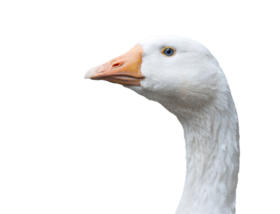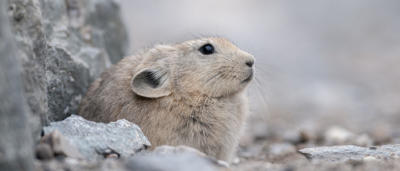New microbes discovered in a person’s eye, 12,000-year-old ice and geese
Posted on March 10, 2020 by Laura Cox
Each month, the Microbiology Society publishes the International Journal of Systematic and Evolutionary Microbiology (IJSEM), which details newly discovered species of bacteria, fungi and protists. Here are some of the new species that have been discovered and the places they’ve been found.
This month, two new species of protozoa were reported in IJSEM. A team of researchers from China found two new ciliates in a mangrove wetland. Uronema apomarinum was found in small puddles of slightly salty water around tree roots. Homalogastra parasetosa are round and also prefer brackish water. Both of these new protists are part of the Scuticociliatia small subclass of ciliates.

A new species of bacteria was discovered in a sick goose this month. Mycoplasma anserisalpingitidis, which is resistant to penicillin was found in the lymph of a male goose with inflammation. Meanwhile, a research team in Japan found a new species of bacteria in the meibum of a person. Meibum is the oily substance produced by the eye to prevent drying of the surface of the eye and also stops tears from spilling out onto the cheeks. Cutibacterium modestum was found in the meibum produced by an inflamed meibomian gland, which produce meibum.
An orange-coloured bacterium was found near a hydrothermal vent this month. Paracoccus aurantiacus was found in the water above a shallow-sea hydrothermal system near Guishan Island in the Pacific Ocean. Another new species of bacteria was found this month in a wood-boring mollusc. Teredinibacter waterburyi was isolated from the gills of a shipworm and is oval-shaped with a single flagellum.
Two new species’ of Bartonella were found in in Tel Aviv, Israel, this month. Bartonella are spread by fleas, most commonly amongst rats and other rodents; but some species of these bacteria are known to infect humans and cause serious diseases including sepsis and Carrión’s disease. This month, researchers found Bartonella krasnovii in desert rodent fleas and Bartonella kosoyi in black rats.
A new species of bacteria that can break down pesticides was found in a cricket this month. The cricket was collected from a deserted cropland in China and the new bacterium, which researchers named Ochrobactrum teleogrylli, can degrade a number of commonly used pesticides.

Two new microbes were found in plateau pikas this month. Pleateau pikas are small mammals closely related to rabbits and live in burrows on the Tibetan plateau. Mumia zhuanghuii and Agromyces badenianii were both found in the intestinal contents of plateau pikas. These aren’t the only new microbes found in animals this month. Researchers also found three new species of Helicobacter in the stomach lining of red foxes in Slovenia. Helicobacter labacensis, Helicobacter mehlei and Helicobacter vulpis were all seen for the first time during the research.
Wickerhamiella verensis, a new species of yeast was found in two very different places this month: contaminated groundwater in Spain and a human infection in the USA. In Spain, the yeast was found in groundwater contaminated with hydrocarbons near an old metalworking factory in the north of the country. The human sample was collected from an infant with a blood infection in Atlanta, USA. Usually, new yeasts in the Wickerhamiella genus have been isolated from flowers, insects and wineries or distilleries, although it is not unheard of for them to be recovered from human sources.
This month, another new species of yeast was discovered in 12,000-year-old permafrost collected in the Swiss Alps. The yeast, which was named Cryolevonia schafbergensis, is the first in its genus and has also been isolated from melted sea ice from Canada. C. schafbergensis is not the only new micro-organism to be found in ice this month; Cryobacterium ruanii and Cryobacterium breve were also found on two glaciers in China.

The full papers describing these species are available to journal subscribers, but the abstracts are free to read. Articles can also be purchased individually with the pay-per-view option.

